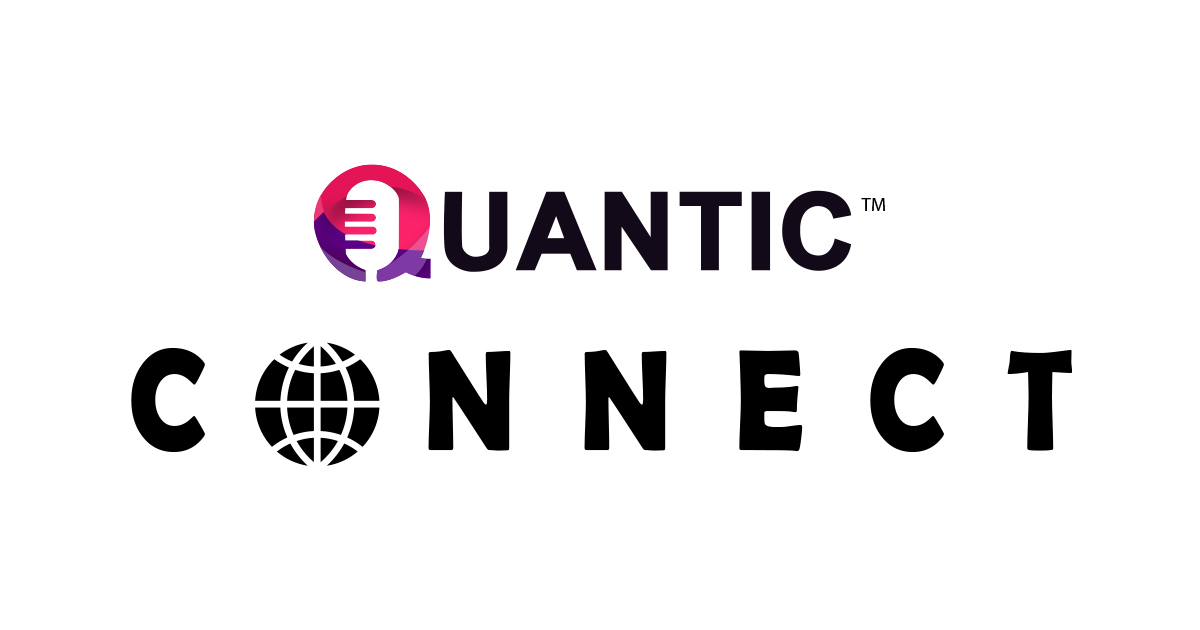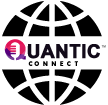Mumbai, 29th April: In today’s rapidly evolving business landscape, the integration of Information Technology (IT) solutions, including pivotal tools like Enterprise Resource Planning (ERP) systems, stands as a cornerstone for organizational success, particularly within the pharmaceutical sector, where efficiency and compliance are paramount. From optimizing supply chains to ensuring compliance with stringent regulatory standards, IT applications play a vital role in driving efficiency, innovation, and competitiveness. In this article, we delve into the multifaceted landscape of IT transformation, exploring the key challenges faced and the promising opportunities that lie ahead on the horizon of innovation.
Join Mr. Junaid Hashmi, Senior General Manager- Information Services at Mankind Pharma Ltd. in conversation with Mr. Marquis Fernandes, who spearheads the India Business at Quantic India, as they navigate through the intricacies of IT transformation, shedding light on the evolving role of technology in shaping the future of pharmaceutical enterprises. From regulatory compliance to the integration of emerging technologies, their conversation offers a comprehensive understanding of the challenges and opportunities that define the IT landscape.
Mr. Junaid Hashmi is a technology evangelist, driving transformative change through technology interventions across industry functions. With a proven track record in digital transformation, he champions ERP, IoT and IIoT technologies and other enterprise applications to optimize operations and foster innovation. Currently, as Sr. General Manager – Information Services at Mankind Pharma Ltd., he is making business impact through multiple initiatives across manufacturing, quality, and logistics automation.
As a seasoned IT Applications professional, could you discuss a recent business-critical IT project you managed, highlighting the technologies and methodologies used, as well as the challenges encountered and how you addressed them?
There have been multiple business critical IT transformation initiatives in my way in last 15 plus years – with varied applications, across multiple functions. I recently got an opportunity to lead a pivotal initiative to digitalize a large warehouse. This project aimed to boost efficiency, streamline processes, and leverage cutting-edge technologies to stay competitive in the highly regulated pharmaceutical industry. Our technology stack included cloud-based ERP systems, advanced warehouse management software, predictive analytics tools, and Handheld Terminals (HHTs). We adopted an agile methodology infused with lean six sigma principles for continuous improvement, rapid iterations, and seamless team collaboration. One of the primary challenges we faced was integrating legacy partner systems with modern solutions. We addressed this by conducting thorough compatibility assessments, phased data migrations, and extensive training programs to ensure a smooth transition.
Optimizing inventory management without compromising stock levels was another significant challenge. Leveraging predictive analytics and barcode scanners with HHTs, we gained real-time insights into inventory dynamics. This allowed us to implement dynamic inventory replenishment strategies and reduce carrying costs effectively. Barcodes and scanners enabled warehouse operations with real-time validations and end-to-end track and trace during critical material movements, further strengthening organization’s regulatory compliance posture.
Cybersecurity and data protection were paramount. We implemented stringent access controls, and regular security audits to safeguard sensitive information and ensure compliance. The outcomes were enormous. We achieved notable improvements in order fulfilment performance, improved inventory accuracy, and enhanced regulatory compliance levels. Real-time data analytics empowered data-driven decision-making and operational agility. Besides, the project fostered a culture of innovation and collaboration within our organization. By embracing advanced technologies and agile methodologies, we positioned ourselves as leaders in efficient warehousing practices within the industry sector, paving the way for sustained growth and success.
With your core skills and vast experience in ERP solutions, can you provide insights into key considerations to be made for a successful and impactful ERP transformation project?
See, rather than going into typical project management, I would talk more from strategic alignment perspective.
ERP is Enterprise resource planning system that helps businesses manage and automate their core processes like finance, human resources, manufacturing, supply chain, services, procurement, etc. Core strength of ERPs are that they are designed around a single data structure that typically has a common database, which helps ensure that information is normalized and is based on common data objects, giving a harmonized user experiences. It coordinates the flow of data between a company’s business processes, providing a single source of truth and streamlining operations across the enterprise. It’s your core system of records.
Challenges appear when expectations doesn’t match between business and IT. For a very specific e.g. ERP will address your core production planning, production execution or plant maintenance etc. requirements, but it may not be suitable for equipment service logs, usage logs, area cleaning logs, working standards logs etc. For that a separate tool may be required, may be a specialized logbook solution – either built on the same ERP platform or a different one. Now, another problem is when users have expectations based on their earlier experiences – they may assume that every solution on ERP platform is integral part of it and that they used it earlier somewhere, so why not here. What they might not know is that it was a separate bolt-on solution, and that it might even have additional technical and commercial impact. Having said that, many businesses might even go for heavily customized solution in their core ERP itself, but then it can translate into future scalability and even performance issues.
Solution of this challenge revolves around transparently defining and communicating the project scope and setting a boundary around it. Aligning key business stakeholders, right from ideation, scope definition, product evaluation and business case preparation stage, rather than just from requirement gathering phase is the key. Consider ERP a part, in fact the foundation of your digitalization journey, rather than the end of it.
How do you prioritize competing demands and ensure projects are delivered on time and within budget?
It is a multifaceted challenge that revolves around strategic alignment, meticulous planning, proactive risk management, and efficient resource utilization.
Firstly, I prioritize competing demands by closely aligning IT projects with the organization’s overarching business objectives. This involves collaborating with key stakeholders to understand the criticality and impact of each project on business operations. By assessing driving levers such as potential revenue generation, cost savings, regulatory compliance, and customer satisfaction, we can prioritize projects based on their strategic value and alignment with the company’s goals.
Secondly, I emphasize the importance of thorough project planning and execution. This includes developing comprehensive project plans that outline objectives, scope, timelines, resource requirements, and budget allocations. By breaking down projects into manageable tasks and establishing clear milestones and deliverables, we can effectively track progress and identify potential risks or bottlenecks early on. Project management methodologies such as Agile or Waterfall, depending on the nature of the project, can be leveraged to ensure efficient collaboration, communication, and accountability among project teams. Regular progress reviews, status updates, and risk assessments help us stay on track and address any issues proactively.
Budget management involves conducting detailed cost estimations, identifying potential cost-saving opportunities, and establishing contingency plans for unexpected expenses. By closely monitoring project expenditures against budget forecasts and implementing corrective measures when necessary, I ensure that projects are delivered within budget constraints. Effective resource management by leveraging internal expertise, outsourcing when appropriate, and optimizing the use of technology and tools helps in maximizing project teams’ efficiency and productivity while minimizing overhead costs.
Information security is paramount in today’s digital landscape. How do you integrate information security considerations into IT projects, particularly in industries like pharmaceuticals where data protection is critical?
Indeed, I can affirm that information security is not just a priority but an imperative, especially in industries like pharmaceuticals due to the regulatory environment it operates in. By prioritizing information security throughout the project lifecycle and leveraging advanced tools and practices, organizations can effectively mitigate risks and protect sensitive data in today’s digital landscape. Integrating information security considerations into IT projects requires a comprehensive and proactive approach that encompasses various strategies and technologies.
Firstly, it’s essential to embed security measures at every stage of the project lifecycle, from planning and development to implementation and maintenance. This includes conducting thorough risk assessments, partner evaluation, identifying potential vulnerabilities, and implementing robust controls to mitigate risks effectively.
Collaboration between IT and other teams like data privacy and compliance teams, is vital. This ensures that security requirements are aligned with regulatory standards and industry best practices. Regular audits and assessments can also help in identifying and addressing security gaps proactively.
Leveraging advanced technologies such as encryption, access controls, and intrusion detection systems can significantly enhance the security posture of IT projects. Continuous monitoring and threat intelligence are other crucial components of a robust information security strategy. By staying vigilant and adapting to evolving cyber threats, IT leaders can effectively safeguard critical data and systems from potential breaches and cyberattacks.
Can you discuss your experience with IT strategy development and budget planning, including how you align IT initiatives with business objectives and optimize resource allocation?
Absolutely. One of the key aspects of IT strategy is understanding the core business imperatives of organization and translating them into actionable IT initiatives. As I said earlier, this requires close collaboration with various stakeholders, including senior management, department heads, and IT teams, to ensure that technology investments are strategically aligned with business needs.
In terms of budget planning, focus should be on prioritizing investments that deliver the most value to the business. This involves conducting thorough cost-benefit analyses for proposed IT initiatives, evaluating potential risks, and considering long-term scalability and sustainability. By aligning IT spending with strategic priorities, we can optimize resource allocation and ensure that every dollar spent contributes directly to driving business growth and efficiency.
By continuously evaluating the performance of IT initiatives and adjusting our strategies as needed, we can stay agile and responsive to evolving business needs and technology trends.
Basically, approach to IT strategy development and budget planning revolves around fostering a strong alignment between technology and business objectives, and driving continuous improvement to achieve sustainable business success.
Given your extensive experience in IT applications in the pharmaceutical industry, what do you see as the biggest challenges and opportunities in leveraging technology to drive innovation and efficiency in this sector?
Certainly. Having spent a decade and a half in leading multiple IT initiatives, particularly within the pharmaceutical industry, I can talk about both the challenges as well as tremendous opportunities that technology presents in driving innovation and efficiency in this sector.
One of the most significant challenges is the complex regulatory environment that governs the pharmaceutical industry. Strict compliance requirements, data privacy regulations, and evolving standards often pose challenges in adopting new technologies and processes. Balancing innovation with regulatory compliance requires a strategic approach, ensuring that technological advancements align with industry standards while enhancing operational efficiency and quality.
Another challenge is the vast amount of data generated across the value chain, from research and development to manufacturing and distribution. Also, pharmaceutical industry is witnessing a shift towards personalized medicine and precision healthcare. Effectively harnessing immense amount of data through advanced analytics, artificial intelligence, and machine learning presents an ocean of opportunities to gain valuable insights, predictive and prescriptive analytics, tailor treatments, accelerate decision-making and improve patient outcomes.
Furthermore, the rise of digital transformation and Industry 4.0 technologies such as IoT sensor based digital twins, robotics, automation, and cloud computing can streamline manufacturing processes, reduce costs, and enhance product quality.
Integrating these technologies into existing IT systems while maintaining interoperability and scalability is a key challenge. Ensuring data accuracy, integrity, and security remains paramount. Adopting these technologies requires strategic planning, investment in infrastructure, and workforce upskilling.
To know more about us / publish your article, reach us at
www.quanticindia.com
marquis@quanticindia.com.



